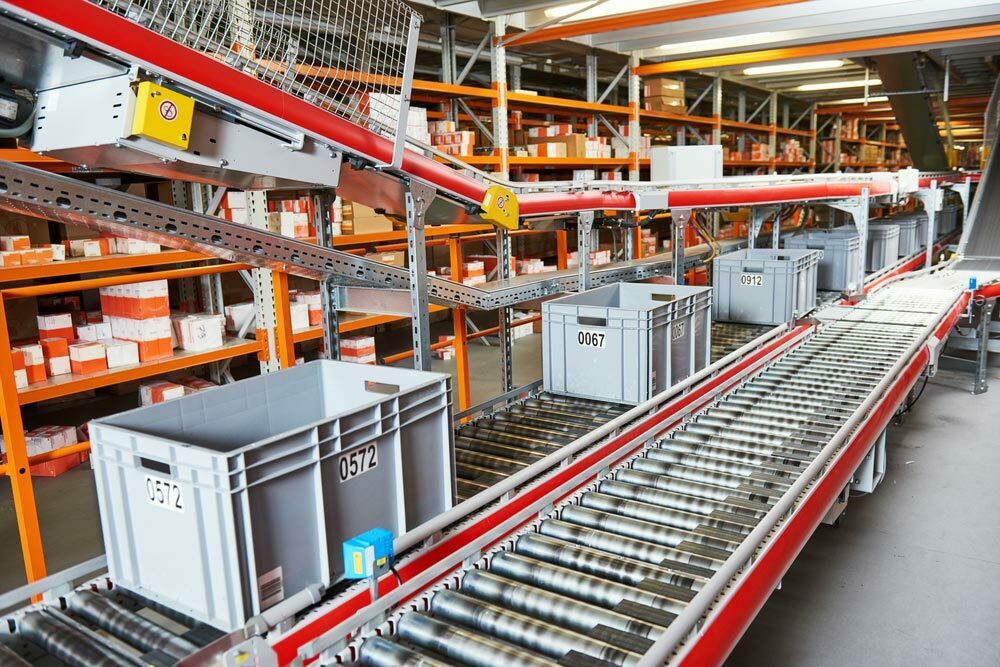Advances in technology have helped create effective solutions to deal with inventory and therefore limited opportunities for error, there is great importance to an order management system, as an order management system provides an overview of your inventory and helps you keep track of what is consumed, providing you with the information you will need to create insights on how to deal efficiently with Your money by highlighting the loopholes in your system and where you are losing money, and in this article we will show you Order Management and Order Processing, and why they are important to your business.
What is order management?
Order management is the process that organizes the delivery of orders to customers as well as the process of implementing and cargo tracking those orders.
Order management begins from the placement of the order until the customer receives his order successfully.
This process is large, so if you have a large business, you need to simplify the order management process by automating it, and thus save more effort resulting from the large number of incoming orders.
What is an order management system?

It is the system that provides you with an integrated store, where the ability to view and manage all customer orders in the same place, and some order management systems are equipped with bi-directional synchronization.
This two-way synchronization will assist you in ordering between your order management system and your e-commerce system, thus providing a complete view of the order passing process.
Order management systems have helped to automate the flow of sales order information to every part of the retail supply chain.
Thus, you can now track the customer’s order process from the beginning until the customer receives his order, even if there is a retrieval process that you will be able to follow.
What is order processing?
After we know what an order management system is, you will also need to know what order processing is, quite simply, the process by which the work flow is from placement of order to delivery.
In fact, order processing is one of the key elements in retail order fulfillment, which entails accuracy and reliability, and thus increases customer confidence.
The order processing can take one of two forms:
- Manual processes
- Highly technological and data-driven processes
The order processing goes through a number of basic steps, namely:
- Picking up.
- Sorting.
- Tracking.
- Shipping
Why your business needs accurate order management
In a small business, you may not need to strictly manage your orders, but when your business expands,
And the orders start to grow exponentially; you will need accurate order management in your business.
Here are a number of advantages that order management can provide to you in your business:
1. Reduce errors fulfilling orders
Order fulfillment errors occur when orders increase dramatically, as you find that you are bombarded with messages from customers inquiring about the status of their orders,
Along with a large number of complaints about delays in delivery times, these customers can even request a refund and cancel the order.
But with an order management system, you avoid that problem from the beginning, as automated systems help you completely reduce human errors,
Thus avoiding the problems of wrong delivery or delayed shipments.
2. Avoid under and over stocking situations
When the stock is less than what is required or more than what is required, this can cause you a lot of problems, on top of which is an increase in costs,
As well as problems in meeting customers’ orders and thus losing a percentage of customers.
But an order management system can help you avoid these issues from the start, as it provides you with an accurate view of seasonal trends in stock levels.
3. Reduce wasted time
Perhaps one of the most important advantages of order management systems is that they save time greatly, as these systems perform many tasks with great accuracy,
That saves your time and allows you to use it in other businesses to expand your business or develop your brand.
4. Providing the necessary information to make the right decisions
Unstructured data is difficult to understand and therefore difficult to benefit from, and data is the most important element for decision makers,
So it must be reliable and organized to make appropriate decisions.
This is what order management systems allow you to do, as you provide all your data and sales orders in one place,
Thus making it easier to analyze the available information and make appropriate decisions.
This will eventually lead to supply chain improvements, along with reduced shipping costs and faster delivery, thus positively impacting profits.
The order management cycle

Now it’s time to introduce the order management cycle, which is an integrated process, starting with the customer’s purchase of a product, and continuing through to delivery and sometimes returns.
Operations management goes through a number of stages, which can be controlled by more than one party, in order to provide an integrated experience for customers, and the following is the order management cycle:
1. Order placed
Customers’ requests are from different places and at different times as well, and therefore you need a specific tool to implement that process for you,
It collects the order and shipping details for you as well as the delivery address, and then puts it into the order management system.
2. Order received
The second stage is receiving requests, and then all information related to those requests is passed to the 3pl fulfillment centers to process the request, which helps reduce delivery time as well as costs.
3. Order is picked
The third stage is to pick up orders from the available stock and then deliver them to the packing moment, and here the role of warehouse management appears, which can greatly affect the way the inventory is arranged to be delivered in time.
4. Order is packaged
After selecting the customers’ requests, those requests are now packaged, and the packaging department fills those requests in a way that reduces the weight of the dimensions, in addition to choosing the packaging method that provides the greatest protection for customers’ requests as well.
5. Order ships
Here comes the stage of shipping orders to customers. After the orders are properly packaged, they are prepared for shipment, with a tracking number assigned to the orders and shared with the customer so that he can follow up on the status of their orders during the trip. This provides them with a measure of confidence and comfort.
6. Item delivered
Finally, the orders are delivered to the end customers, noting that effective order management will help you deliver the correct orders on time without any errors.

